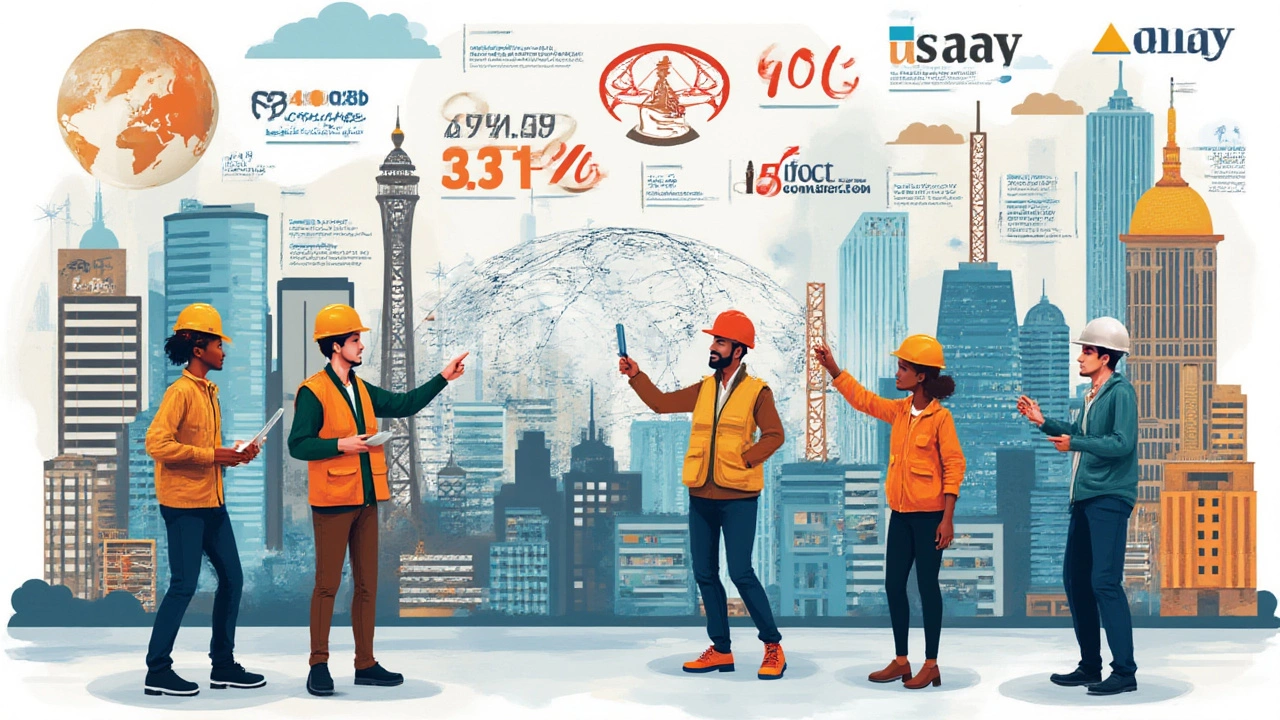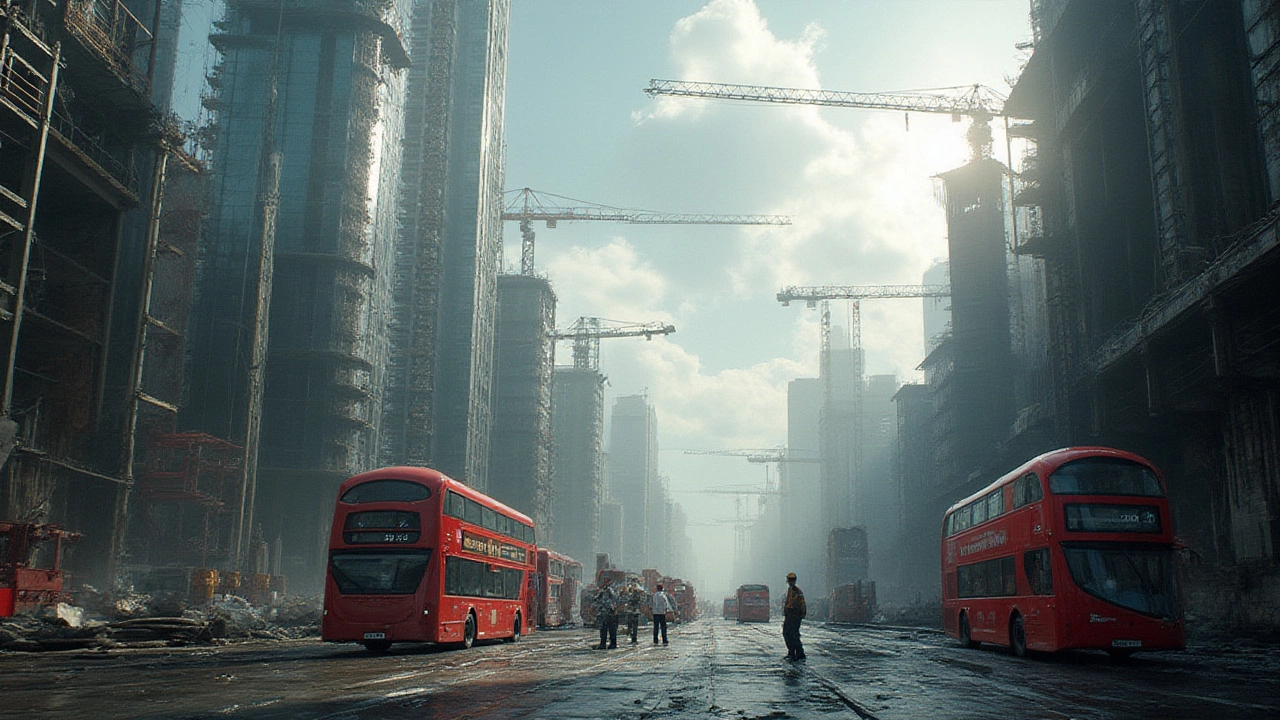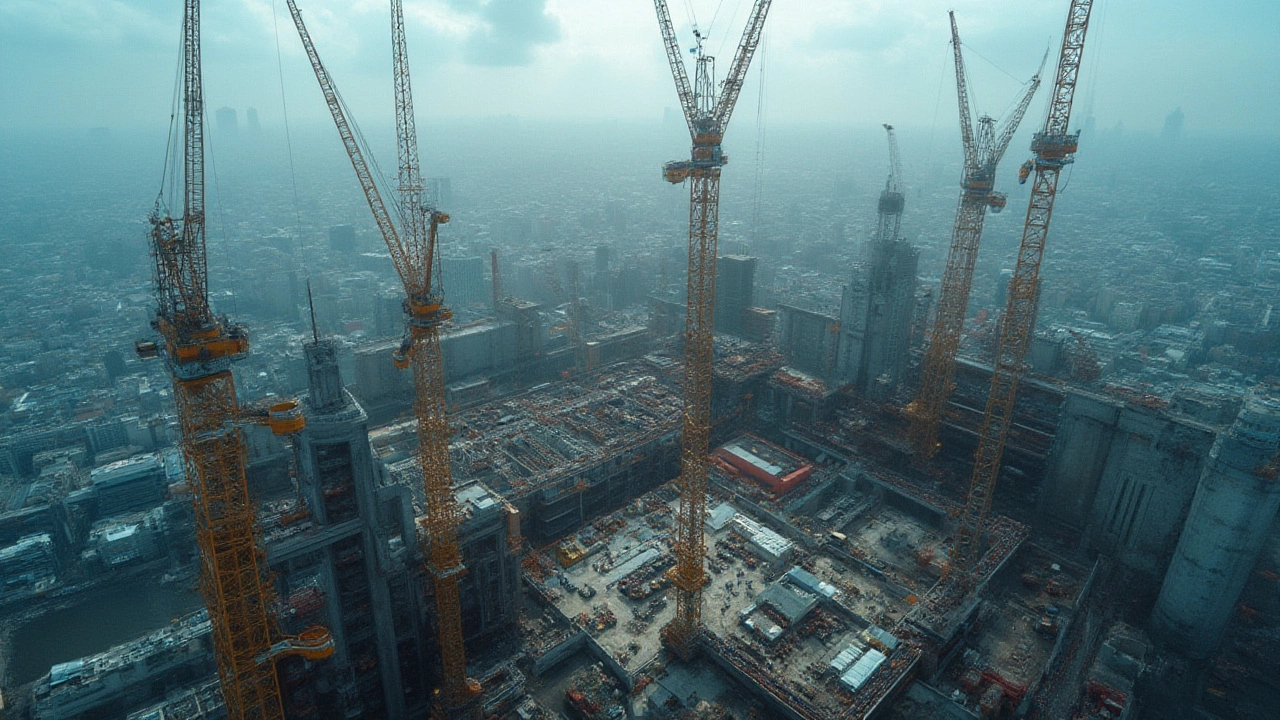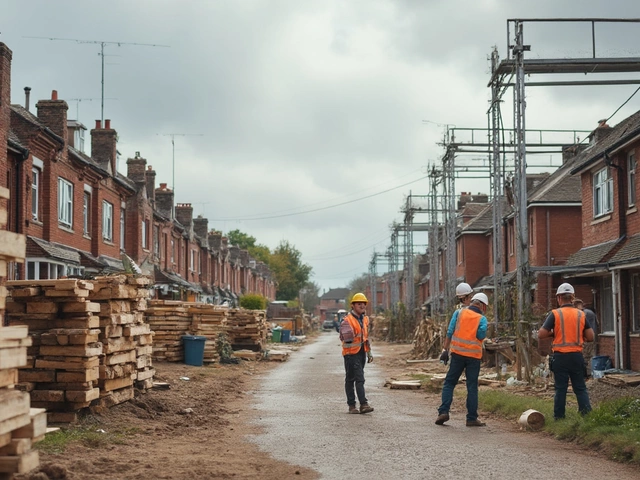Walk through any major city, and you'll spot signs of immense human ambition: glass towers rising skyward, highways being carved through urban jungles, entire districts transformed in the blink of an eye. Now imagine the teams behind those projects—the companies that pull off what sometimes looks like magic. But here's the kicker: when people talk about scale and impact, who actually wears the crown as the world’s biggest construction company? The answer isn’t just about size or money; it’s also about reach, influence, and the sheer force it takes to shape modern life on every continent.
What Does "Biggest Construction Company" Really Mean?
Let’s not kid ourselves—"biggest" can mean a few things. Are we talking about revenue? The number of employees? Projects finished? Miles of roads built? You’ll see different leaders, depending on which lens you use. But when it comes down to the brass tacks, most of the world measures the heavyweight champion by revenue. And in raw numbers, nobody touches the behemoths of China.
Take China State Construction Engineering Corporation (CSCEC). In global rankings, *CSCEC* regularly towers above all other companies by revenue. In 2024, CSCEC reported revenue in excess of $330 billion, making it not just the biggest in construction, but one of the largest companies, period. That’s more than the GDP of many entire countries. That amount alone lets them bankroll projects on every continent except Antarctica. And CSCEC doesn’t just build in China—in recent years, they’ve played high-stakes roles in massive developments from Africa’s railroads to European skyscrapers.
So how do they manage this? Chinese construction companies benefit from a unique blend of state backing, nearly bottomless financing, and gigantic labor forces. To put those numbers into perspective, have a look:
| Company | Headquarters | 2024 Revenue (USD) | Employees | Key Markets |
|---|---|---|---|---|
| China State Construction Engineering Corporation (CSCEC) | Beijing, China | $330 billion | ~368,000 | Global |
| China Railway Group | Beijing, China | $165 billion | ~290,000 | Asia, Africa |
| Vinci | Rueil-Malmaison, France | $66 billion | ~272,000 | Europe, Americas |
| ACS (Actividades de Construcción y Servicios) | Madrid, Spain | $41 billion | ~180,000 | Europe, North America, Australia |
It’s clear that Chinese firms dominate in revenue and headcount. But companies like Vinci (France) and ACS (Spain) aren’t exactly lightweights either—they handle billion-dollar airports, tunnels, bridges, and stadiums all over the planet. American powerhouses such as Bechtel and Fluor, while smaller by revenue, are legendary in engineering circles for iconic work like the Channel Tunnel or the Hoover Dam revamp.
This is what makes choosing the “biggest” more interesting than it appears. Want to talk about technological innovation? Japan’s Obayashi Corporation and Kajima keep pushing boundaries in earthquake-proof buildings. Looking for truly global footprints? Companies like Bouygues have projects in more than 100 countries. The industry’s geography isn’t just about money—it’s about expertise, specialization, and sometimes, cultural influence. After all, British firms like Balfour Beatty helped build much of the modern rail infrastructure in the UK, right here in my backyard in Bristol.

The World’s Mega Projects and Who Builds Them
It’s one thing to see a name on a list; it’s another to watch what these titans actually do. The world’s biggest construction companies get contracts that are so ambitious they sound almost impossible. For example, CSCEC was the main builder for Beijing’s Daxing International Airport—the one with the starfish shape you might’ve seen on Instagram. This airport covers more space than 100 Wembley Stadiums stacked together.
Then there’s Vinci, which played a huge hand in constructing the Grand Paris Express subway network in France—a system that will stretch over 200 kilometers once finished, adding four new metro lines and transforming how millions move around the city.
Let’s not leave the Middle East out. Saudi Arabia’s NEOM project—a futuristic city rising from the desert, slap-bang north of the Red Sea—is pulling in expertise from all over the world. While no single construction company owns the entire project, CSCEC, Bechtel, and other giants have been enlisted for everything from early groundwork to smart infrastructure planning.
Everyone hears about the Dubai skyline, but few people realize how much of it relies on firms from South Korea (Samsung C&T) and the UK (Laing O’Rourke), who’ve pulled off record-setting feats like the Burj Khalifa and the Palm Jumeirah. So if you thought "biggest" was just about money, seeing these projects makes it clear: it’s also about the ability to dream big and actually deliver.
The variety of mega projects is stunning. From hydroelectric dams in the Amazon to entire high-speed rail networks in Spain, the largest firms aren’t limited by borders. And this international diversity means they’re constantly pushing the limits of what’s possible—longer bridges, greener buildings, more resilient communities. Even in little corners of the UK like Bristol, we benefit from innovations first tried out by these mega-firms on the other side of the world. Lara still laughs about the time we got stuck in London traffic, only to spot Vinci’s name on half the roadworks that had delayed us.
Here are a few wild stats to help wrap your head around the scale we’re talking about:
- The Three Gorges Dam in China (built with help from many of the country’s biggest construction teams) used more than 27 million cubic meters of concrete—enough to pave a six-lane highway from Bristol to Istanbul.
- Vinci manages about 40,000 construction sites per year worldwide—imagine the paperwork alone.
- Bechtel was involved in a project to relocate an entire city in Australia due to mining expansion, moving homes, shops, and a cathedral brick by brick.
If you’re ever bored, grab a coffee and go looking for a list of the tallest buildings, longest tunnels, or biggest stadiums on the planet. Chances are, you’ll see the same group of mega-companies popping up over and over, no matter where the project is.

What Sets the Construction Giants Apart?
Money isn’t enough. Massive construction firms have to prove they can handle insane logistics, tight deadlines, politics, and sometimes even natural disasters. Take safety: with hundreds of thousands of workers, these companies obsess over keeping accident rates low. Vinci famously runs mandatory safety briefings for every crew, every morning—no matter where in the world they’re building.
Then there’s tech. The best firms don’t just pour concrete—they invent new materials, deploy drones to survey sites, and even use robots for dangerous jobs like demolition. CSCEC is at the forefront of smart building tech in China, using AI-powered modelling to plan entire cities before breaking ground. ACS in Spain is a pioneer in green building practices, often using recycled materials and designing sites to collect rainwater for everything from irrigation to cooling large-scale datacentres.
Crisis management is also a huge part of the job. During the COVID-19 pandemic, CSCEC built two 1,000-bed hospitals in Wuhan in just over a week—one of the fastest large-scale builds in history. Meanwhile, Bechtel has handled cleanup at nuclear disaster areas, which might be the toughest gig in construction anywhere.
Global footprint is key, too. Sure, it’s handy to have endless cash for massive projects, but the real difference is boots on the ground in dozens of countries, navigating language barriers, regulatory headaches, and cultural differences. You’re as likely to run into a CSCEC engineer in Africa as you are in Brussels, and Vinci’s presence in the UK is woven into the fabric of everyday life, from train tunnels to motorway flyovers.
But here’s another angle: people. The culture in these companies can be surprisingly down-to-earth. I’ve chatted with folks working for Balfour Beatty in Bristol, and despite the giant projects, they’re quick to talk about legacies left behind—how their railwork lets kids get to school faster, or how new bridges connect isolated communities. There’s pride in being part of something huge *and* building something that matters to real people, whether that’s shelter, transport, or jobs for thousands. That part keeps getting overlooked, but it’s what really separates a true industry giant from just a big corporation.
If you’re planning to bid for work with—or just marvel at—the biggest construction company on the planet, remember that it’s less about logos or slogan-filled billboards. What matters most is impact: miles of roads, millions of homes and businesses, and an evolving skillset that never stops growing. And while CSCEC holds the biggest construction company title right now, the world’s major players are in a constant race, so don’t be shocked if you see another name on top in a few years. Grab a front-row seat—it’s an industry that makes the impossible real, every single day.





